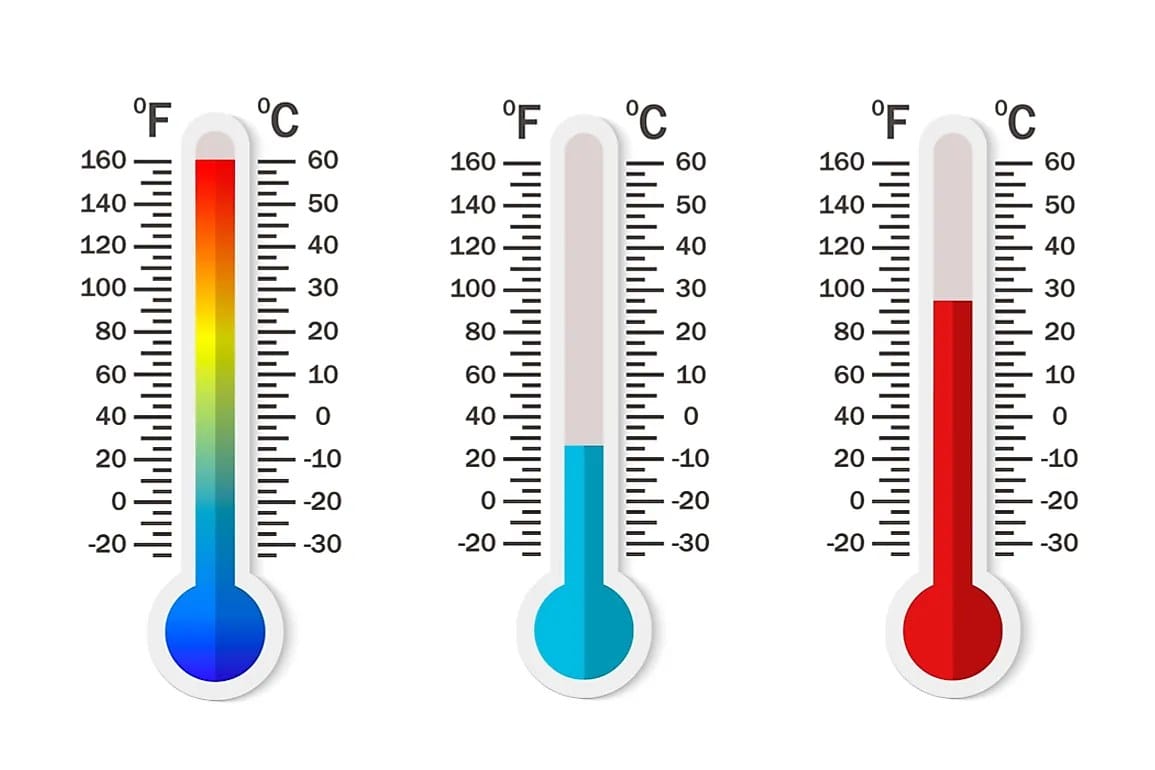Understanding Normal Body Temperature: What is 98.6°F in Celsius?
We’ve all been taught that 98.6°F is the “normal” human body temperature. But have you ever wondered what that number translates to in Celsius, the temperature scale used by most of the world? In this comprehensive guide, we’ll delve into temperature conversions, debunk common myths about body temperature, and explore why understanding Celsius is essential for navigating our health in a globalized world.
98.6°F to Celsius: Demystifying the Numbers
Let’s get straight to the point: 98.6°F converts to a neat 37°C. But how do we arrive at this conversion? It’s a simple two-step process:
Step 1: Subtract 32 from the Fahrenheit temperature:
98.6 – 32 = 66.6
Step 2: Multiply the result by 5/9:
66.6 x (5/9) = 37
There you have it—a straightforward conversion from Fahrenheit to Celsius.
Beyond 98.6°F: A More Nuanced View of “Normal”
While 98.6°F has long been considered the standard, recent studies suggest that our average body temperature might be slightly lower. It turns out, a multitude of factors can cause our temperature to fluctuate throughout the day, including:
- Age
- Time of day
- Activity Level
- Geographic Location
- Overall Health
So, don’t fret if your thermometer shows a slight variation from 98.6°F—it’s perfectly normal.
Celsius: The Global Language of Temperature
Celsius is like the universal language of temperature measurement, widely used in weather forecasts, scientific research, and even cooking recipes across the globe. Why is it so popular? Consider this:
- In Celsius, water freezes at a clean 0°C and boils at a crisp 100°C, offering a more intuitive and straightforward system compared to Fahrenheit’s 32°F and 212°F, respectively.
Familiarizing yourself with Celsius equips you to understand and interpret temperatures in a variety of contexts, whether you’re deciphering a scientific study, trying a new recipe from an international cookbook, or simply following the weather report from a friend abroad.
Unlocking the Heat: A Deep Dive into “How much is 98.6 in Celsius?”
The conversion of 98.6 degrees Fahrenheit to Celsius is more than just a mathematical exercise—it’s about understanding the language of temperature in a globalized world. Let’s explore why this conversion matters:
The Importance of Conversion:
- Medical Accuracy: Accurate temperature readings are crucial for diagnosing and monitoring illness. The ability to convert between Fahrenheit and Celsius ensures clear communication between medical professionals and patients, especially in countries that use different systems.
- Global Communication: In an increasingly interconnected world, knowing how to convert between Fahrenheit and Celsius allows us to access and understand information from different regions. This is essential not only for travel but also for scientific collaboration, international business, and even simply staying informed about global events.
Dispelling the 98.6°F Myth:
- Individual Variation: Contrary to popular belief, 98.6°F is not a set-in-stone rule. Normal body temperature varies from person to person and can fluctuate throughout the day. Factors like age, metabolism, and activity level all play a role.
- Evolving Research: Recent studies suggest that the average human body temperature may be slightly lower than previously thought. This highlights the importance of staying informed and consulting with healthcare professionals to understand what’s normal for you.
Celsius: The Global Standard:
- Prevalence: Celsius is the predominant temperature scale used in most countries worldwide, making it essential for clear communication and understanding in a variety of contexts.
Is 37.1°C a Fever? Understanding Normal Temperature Ranges
You check your thermometer and see 37.1°C. Is it time to worry? To answer this question, let’s delve into what constitutes a fever and understand the normal fluctuations in body temperature.
Debunking the 98.6°F Myth:
- Average, Not Absolute: While 98.6°F (37°C) is often cited as the “normal” body temperature, it’s crucial to remember that this is just an average.
- Normal Range: For most adults, a range between 36.5°C (97.7°F) and 37.2°C (99°F) is considered normal.
- Factors Influencing Temperature: Factors like time of day, age, activity level, and even menstrual cycles can cause natural fluctuations within this range.
Defining a Fever:
- Elevated Temperature: A fever is generally considered to be a body temperature of 38°C (100.4°F) or higher.
- Body’s Defense Mechanism: A fever is an immune response, indicating your body is working to fight off an infection.
37.1°C (98.8°F): Fever or Not?
- Within Normal Limits: At 37.1°C (98.8°F), your temperature falls within the normal range for most individuals.
- Monitoring for Other Symptoms: While a temperature of 37.1°C alone is not usually a cause for concern, it’s essential to pay attention to other symptoms you may be experiencing.
When to Seek Medical Advice:
- High Fever: Seek medical attention for temperatures exceeding 39.5°C (103.1°F) in adults or 38°C (100.4°F) in infants under three months old.
- Persistent Fever: Consult a doctor if a fever lasts for more than three days despite home care measures or if you have any concerns.
- Severe Symptoms: Seek immediate medical help if your fever is accompanied by a severe headache, stiff neck, confusion, difficulty breathing, or other concerning symptoms.
What is a 102.6 Fever in Celsius? Decoding High Temperatures
A temperature of 102.6°F is undoubtedly a high fever. But what does that number translate to in Celsius, and what should you do if you or someone you know has a fever this high?
Conversion and Significance:
- Celsius Equivalent: A 102.6°F fever converts to 39.2°C.
- Cause for Concern: This temperature falls well above the normal range and indicates a significant fever.
Understanding Fever Severity:
- Low-Grade Fever: 99.1°F to 100.4°F (37.3°C to 38°C)
- High-Grade Fever: Above 104°F (40°C) – Requires immediate medical attention.
Managing a Fever at Home:
While a fever is a sign that your body is fighting off infection, there are steps you can take to manage discomfort and support your body’s healing process:
- Hydration: Drink plenty of fluids, such as water, clear broth, or electrolyte solutions, to prevent dehydration.
- Rest: Give your body the energy it needs to recover by getting plenty of rest.
- Cool Compresses: Apply cool compresses to your forehead, neck, and wrists to help reduce body temperature.
- Over-the-Counter Medications: Consider over-the-counter medications like acetaminophen or ibuprofen to reduce fever and alleviate discomfort.
When to Seek Medical Attention:
- High Fever: Seek immediate medical attention for any fever exceeding 103°F (39.4°C) in adults or 100.4°F (38°C) in infants under three months old.
- Persistent Fever: Consult a doctor if your fever lasts for more than three days, despite home care measures, or if you have any concerns.
- Severe Symptoms: Seek immediate medical help if your fever is accompanied by a severe headache, stiff neck, confusion, difficulty breathing, chest pain, abdominal pain, rash, or seizures.
If you are wondering what is the body temperature of 36.5 Celsius in Fahrenheit, click on 36.5 Celsius Fahrenheit. Similarly, if you want to know what Fahrenheit is equivalent to 36.7 Celsius, click here.

















2 thoughts on “Understanding Normal Body Temperature: What is 98.6°F in Celsius?”
Comments are closed.